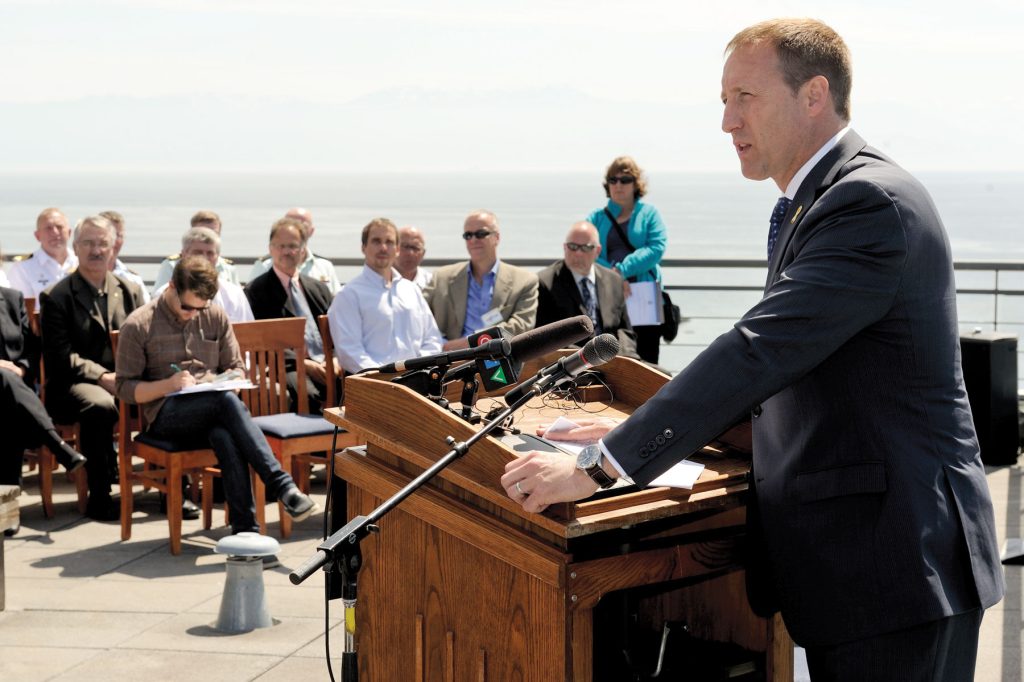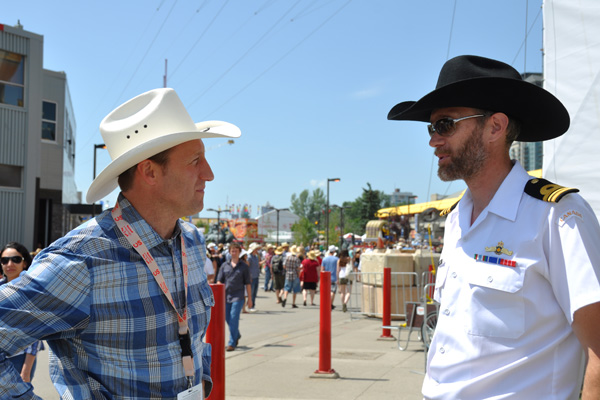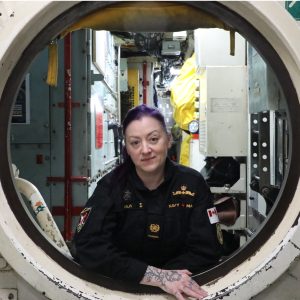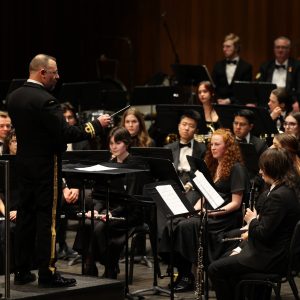Minister MacKay introduces War of 1812 pins
On July 19 during his visit to CFB Esquimalt, The Honourable Peter MacKay, Minister of National Defence unveiled the War of 1812 Commemorative pins which will be worn by all Canadian Forces members for the next three years to mark the sacrifice and commitment of those who fought in this war from 1812-1815. He pinned the first one on Sailor of the Quarter LS Mathieu Blais during a ceremony held on the Wardroom patio. The 1812 Commemorative banner was also unveiled which will be flown by Canadian Forces units, formations and establishments across the country. “This tribute will be a daily reminder of a key chapter in Canada’s history, and of the courageous efforts made by the regular and militia soldiers, provincial marine and the aboriginal allies who helped define who we are today,” said Minister MacKay. “Alongside our Government’s commitment to support the men and women of the Canadian Forces for the challenges of the future, we have made important progress in preserving and promoting the history of those who served in years past.” The War of 1812 was instrumental in the development of Canada’s military and tells the story of the Canada we know today – an independent and free country in a constitutional monarchy with its own parliamentary system. French and English speaking Canadians fought and defended Canada alongside First Nations members during the War of 1812. “Canadian Forces members across the world can proudly wear their pin and fly their banners as, much like their ancestors, they proudly serve Canada by defending its values, interests and sovereignty.” As part of its initiative to commemorate the 200th anniversary of the War of 1812, DND created the CF War of 1812 Commemorative Banner which will be presented to CF units, formations, and establishments whose heritage embraces service in the defence of Canada during 1812-1815. The banner will be carried, flown, or displayed throughout the 2012-2015 commemorative period and paraded thereafter by units, formations, and establishments on anniversaries of...































